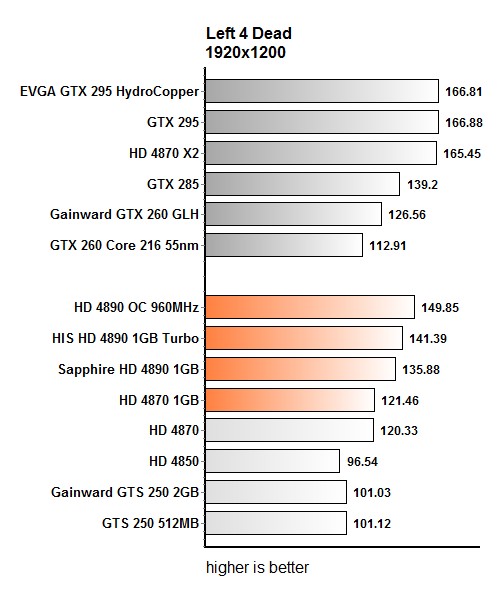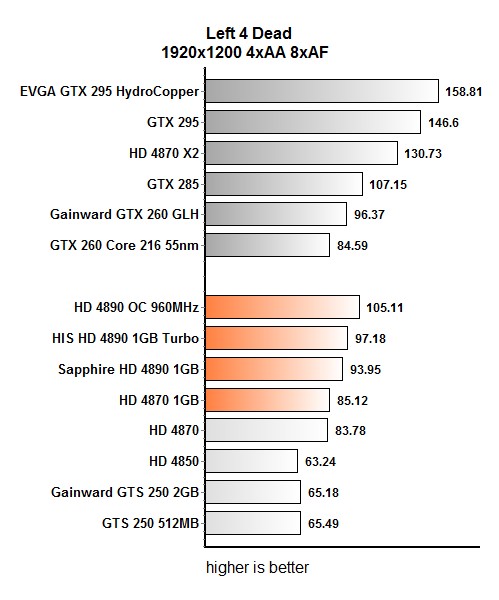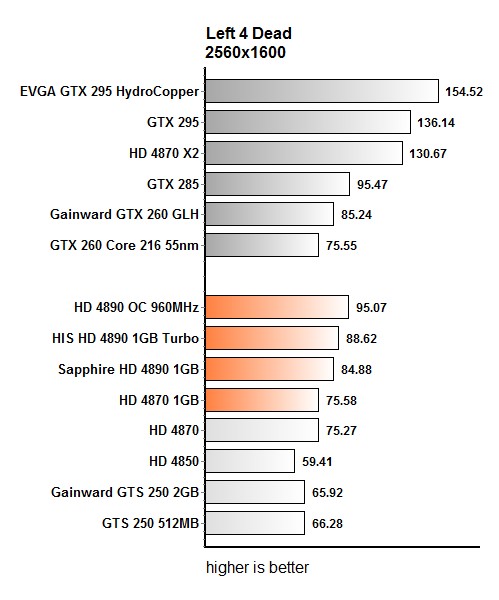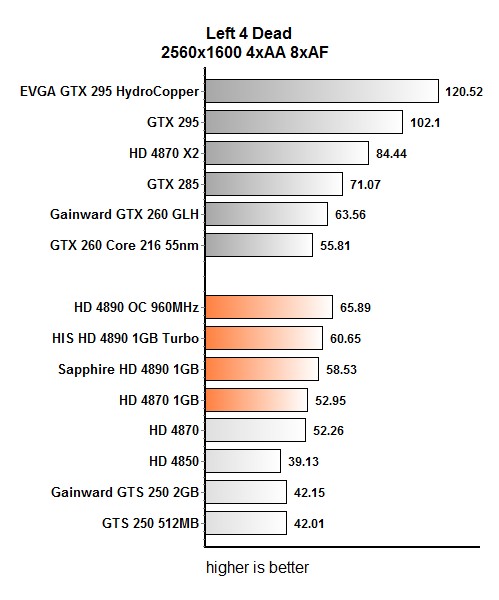Page 3 of 3
GPU Temperatures

As you can see, HD 4890 thermals are great, and we see XFX’s overclocked card at same temperatures as Sapphire’s reference one. Additional overclocking and auto fan rpm regulation results in temperatures of 90 degrees Celsius. This is still on the safe side, and great considering the card is overclocked to 970MHz. If you choose to increase the fan rpm to max, which has proven to be too loud for our taste, the temperatures duck to 74°C.
The fan is quite loud when the card is in 3D mode, but it’s still not that serious. In idle mode it’s quiet enough, but note that it’s louder than the one on GTX 260 cards.
Overclocking
As we mentioned before, we managed to overlcock XFX HD 4890 900M XXX to 970MHz and the card ran stable while gaming and testing. It took approximately one hour for us to test it with Vantage mark, but FurMark unfortunately revealed some image artifacts.
This little OpenGL tool ran stable at 970MHz core, but due to artifacts, we ended up lowering the GPU clocks until the artifacts were gone. We finally achieved that at 925MHz.
Other HD 4890 cards did similar. Sapphire’s HD 4890 ran at 960MHz core, and HIS’ HD 4890 Turbo ran stable in gaming at 985MHz. We again took a shot at the FurMark test, and it revealed artifacts in both scenarios.
We then downclocked the cards and it also took the 925MHz clock to get rid of the artifacts on Sapphire’s HD 4890, whereas HIS managed to lose the artifacts at 940MHz.
We had no trouble overclocking the memory on all the cards to 1150MHz.
Below you’ll see the results of overclocking the HD 4890 to 960MHz core and the memory to 1100MHz (4400MHz effectively). The results of all three HD 4890 cards were almost identical, give or take 0.5%, so we marked them all as HD 4890 OC 960MHz.




Consumption
Although AMD managed to lower the HD 4890’s consumption compared to HD 4870 in idle mode, the GTX 260 is still better. As we mentioned before, the fact that the HD 4890’s memory runs at 975MHz in both 3D and 2D modes is the culprit. GPU downclocks from 850MHz to 240MHz in idle mode.


Conclusion
AMD Radeon HD 4890 is without a doubt faster than the HD 4870 and GTX 260, but Nvidia has another ace up its sleeve – the Geforce GTX 275. The card was launched on the same day as the HD 4890, probably to spoil AMD’s fun. We still didn’t get a chance to test this card, but the results we’ve seen suggest that it’s slightly faster than the new Radeon. Let’s get real though – HD 4890 is a great graphics card with great performance and priced at only €210, which is the lowest priced reference card. XFX sent us their overclocked XFX HD 4890 900M XXX, which runs at 900MHz and we’d dare to guess it should sell somewhere around €240.
With the graphics card, XFX will give away Tom Clancy’s H.A.W.X game, which features DX 10.1 support. This feature is currently exclusive to AMD’s cards, as Nvidia decided not to implement this but rather to switch directly to DX11 whenever it shows its face. Now however, we’d sincerely recommend turning DX10.1 on in games that support it, as AMD’s cards will use it well and surely run faster than Geforce cards.
XFX HD 4890 900M XXX comes with 1GB of GDDR5 memory, which is HD 4890’s default video buffer size. The memory runs at reference 975MHz or 3900 effectively if you will. If you crave overclocking, this card will offer a lot of flexibility.
XFX HD 4890 900M XXX is currently the best and fastest AMD’s single-GPU card, and if you decide on buying it we promise you won’t regret it.
« Prev Next
